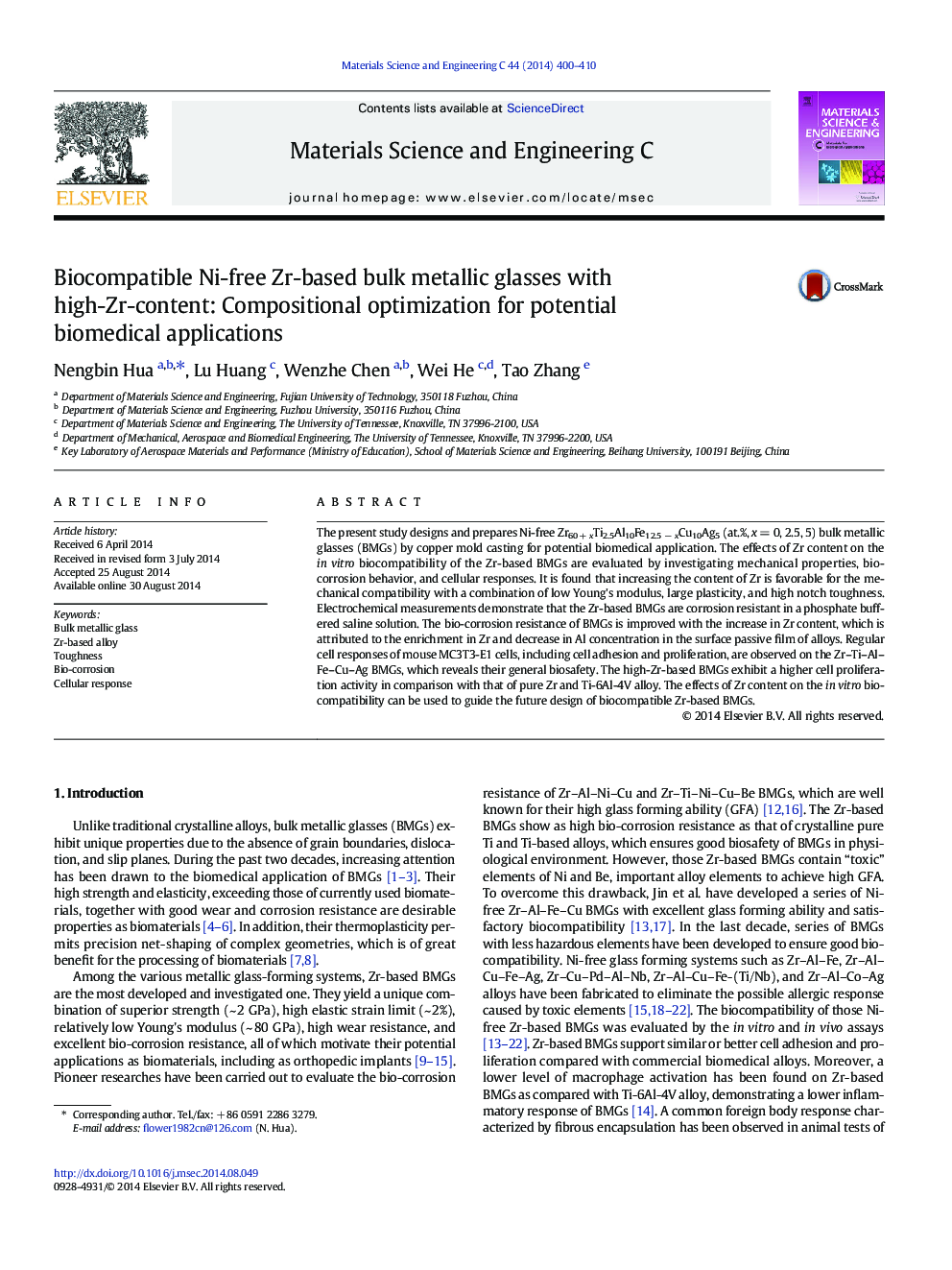| Article ID | Journal | Published Year | Pages | File Type |
|---|---|---|---|---|
| 1428299 | Materials Science and Engineering: C | 2014 | 11 Pages |
•Ni-free Zr60 + xTi2.5Al10Fe12.5 − xCu10Ag5 (at.%, x = 0, 2.5, 5) BMGs were fabricated.•Plasticity and notch toughness of BMGs are enhanced by high-Zr-content.•The high-Zr-based BMGs exhibit excellent bio-corrosion resistance in PBS solution.•The biosafety of BMGs is revealed by regular cell adhesion and proliferation.•High-Zr-bearing BMGs are favorable for potential applications as biomaterials.
The present study designs and prepares Ni-free Zr60 + xTi2.5Al10Fe12.5 − xCu10Ag5 (at.%, x = 0, 2.5, 5) bulk metallic glasses (BMGs) by copper mold casting for potential biomedical application. The effects of Zr content on the in vitro biocompatibility of the Zr-based BMGs are evaluated by investigating mechanical properties, bio-corrosion behavior, and cellular responses. It is found that increasing the content of Zr is favorable for the mechanical compatibility with a combination of low Young's modulus, large plasticity, and high notch toughness. Electrochemical measurements demonstrate that the Zr-based BMGs are corrosion resistant in a phosphate buffered saline solution. The bio-corrosion resistance of BMGs is improved with the increase in Zr content, which is attributed to the enrichment in Zr and decrease in Al concentration in the surface passive film of alloys. Regular cell responses of mouse MC3T3-E1 cells, including cell adhesion and proliferation, are observed on the Zr–Ti–Al–Fe–Cu–Ag BMGs, which reveals their general biosafety. The high-Zr-based BMGs exhibit a higher cell proliferation activity in comparison with that of pure Zr and Ti-6Al-4V alloy. The effects of Zr content on the in vitro biocompatibility can be used to guide the future design of biocompatible Zr-based BMGs.
